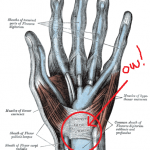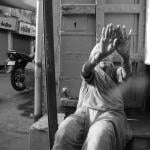Courtney at From Austin to A&M has an excellent article about food stamps that helps bust a number of myths about poor people at large cheating the system and spending their own money on frivolous things like televisions. There is also the fact that the surplus of refined food products in the United States means that you can be nutritionally deficient while still consuming an excess of calories.
From Austin to A&M – Food stamps: How do they work?
Myth #1: There are no breadlines anymore, so people need to stop acting like hunger is a problem in the U.S. This is patently untrue. People are still hungry in the U.S. and there ARE still breadlines, they just don’t look the same. They’re spread out and less visible. They’re in front of food pantries. When I lived in Georgetown, TX, there was a line that stretched out for two blocks in front of the food pantry near our house every other Sunday. Bread lines are also at grocery stores at midnight at the beginning of the month. I’m not the only food stamp recipient who goes to the grocery store at 11:30 on the 2nd of the month (my benefits are loaded on the 3rd) and makes sure to check out after midnight. Bill Simon, the U.S. CEO of Wal-Mart, said in 2010,
“And you need not go further than one of our stores on midnight at the end of the month. And it’s real interesting to watch, about 11 p.m., customers start to come in and shop, fill their grocery basket with basic items, baby formula, milk, bread, eggs, and continue to shop and mill about the store until midnight, when … government electronic benefits cards get activated and then the checkout starts and occurs. And our sales for those first few hours on the first of the month are substantially and significantly higher. And if you really think about it, the only reason somebody gets out in the middle of the night and buys baby formula is that they need it, and they’ve been waiting for it. Otherwise, we are open 24 hours—come at 5 a.m., come at 7 a.m., come at 10 a.m. But if you are there at midnight, you are there for a reason.”
So our bread lines aren’t as visible (remember that food stamps are loaded on three different dates, meaning the uptick in customers on one of those dates at midnight might not be as obvious to the casual observer), but many people are finding it difficult to eat in this country. The fact that 44,708,726 people, about 1 in every 7 Americans, are enrolled in SNAP suggests that a lot of people are facing economic hardships bad enough to result in food insecurity.
















